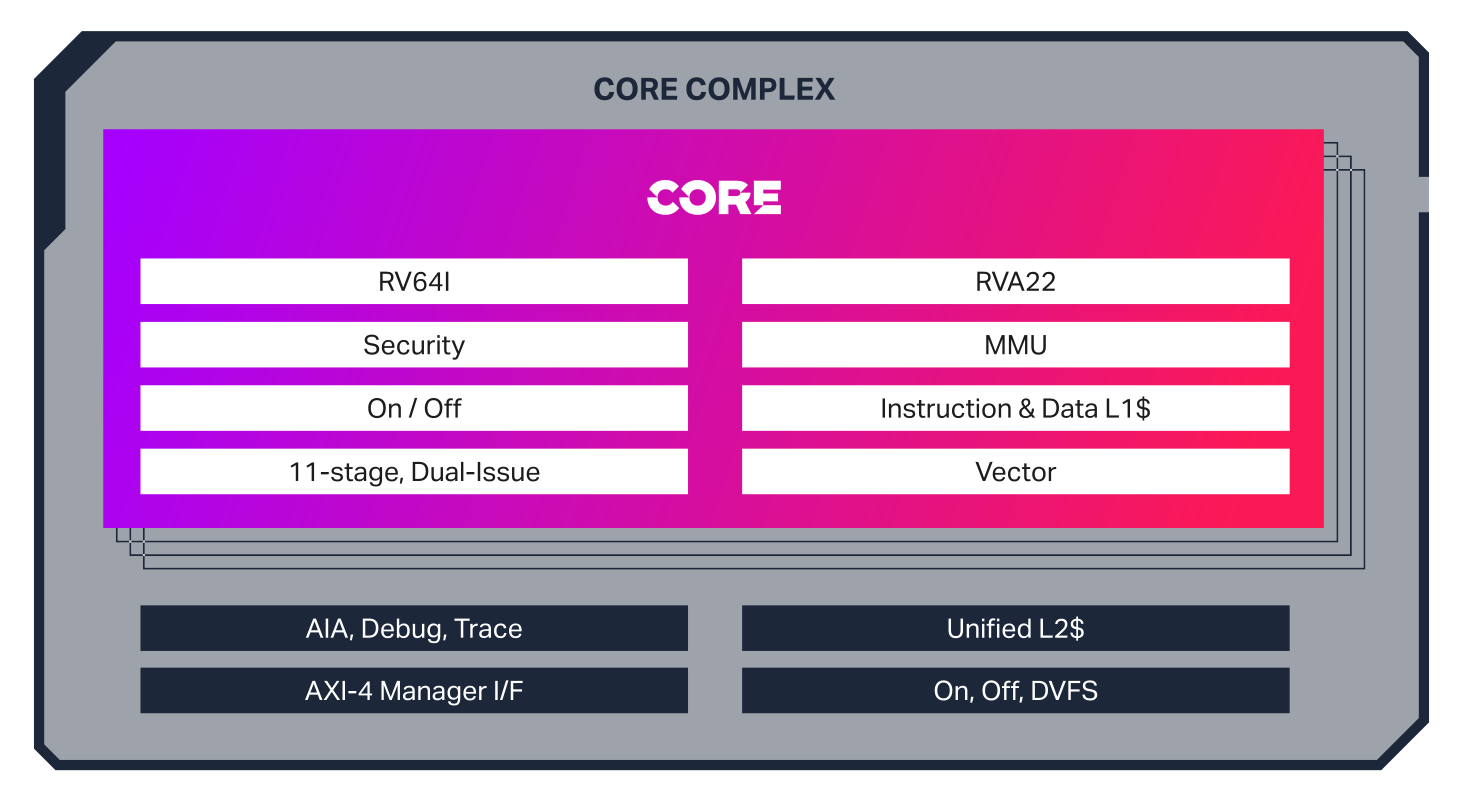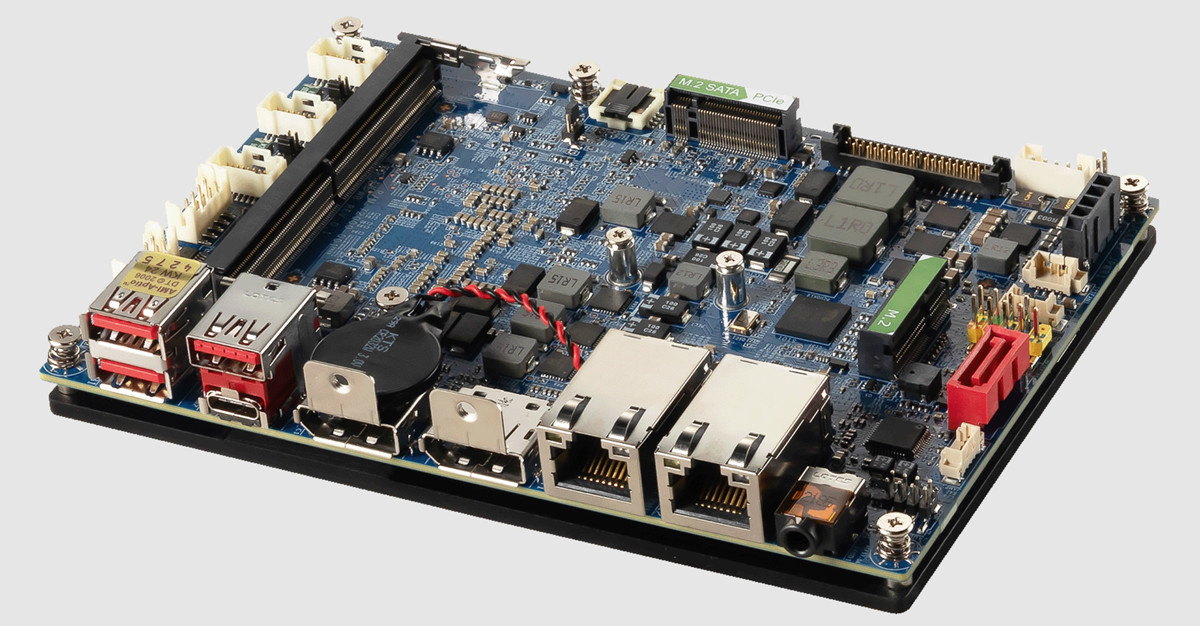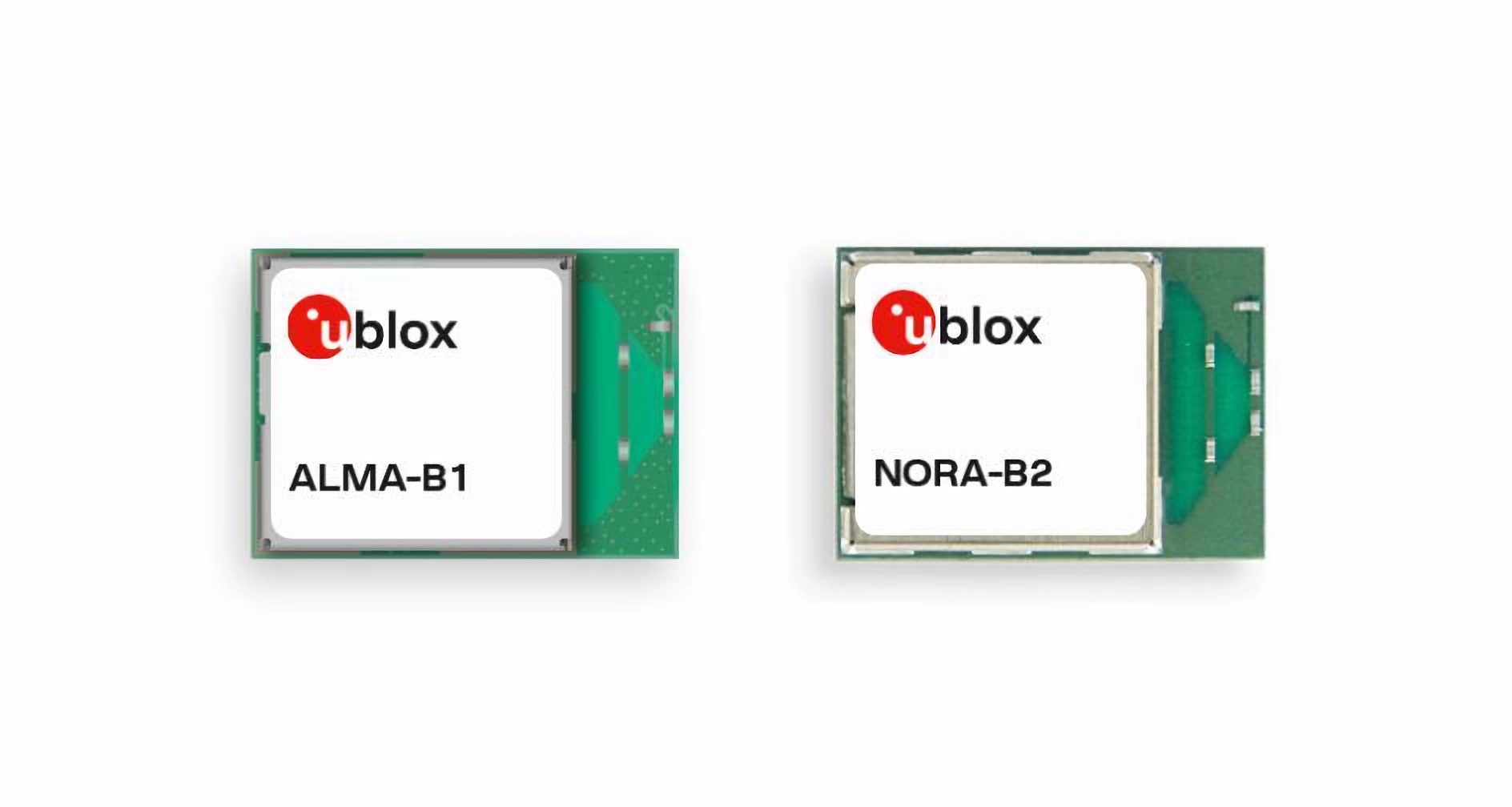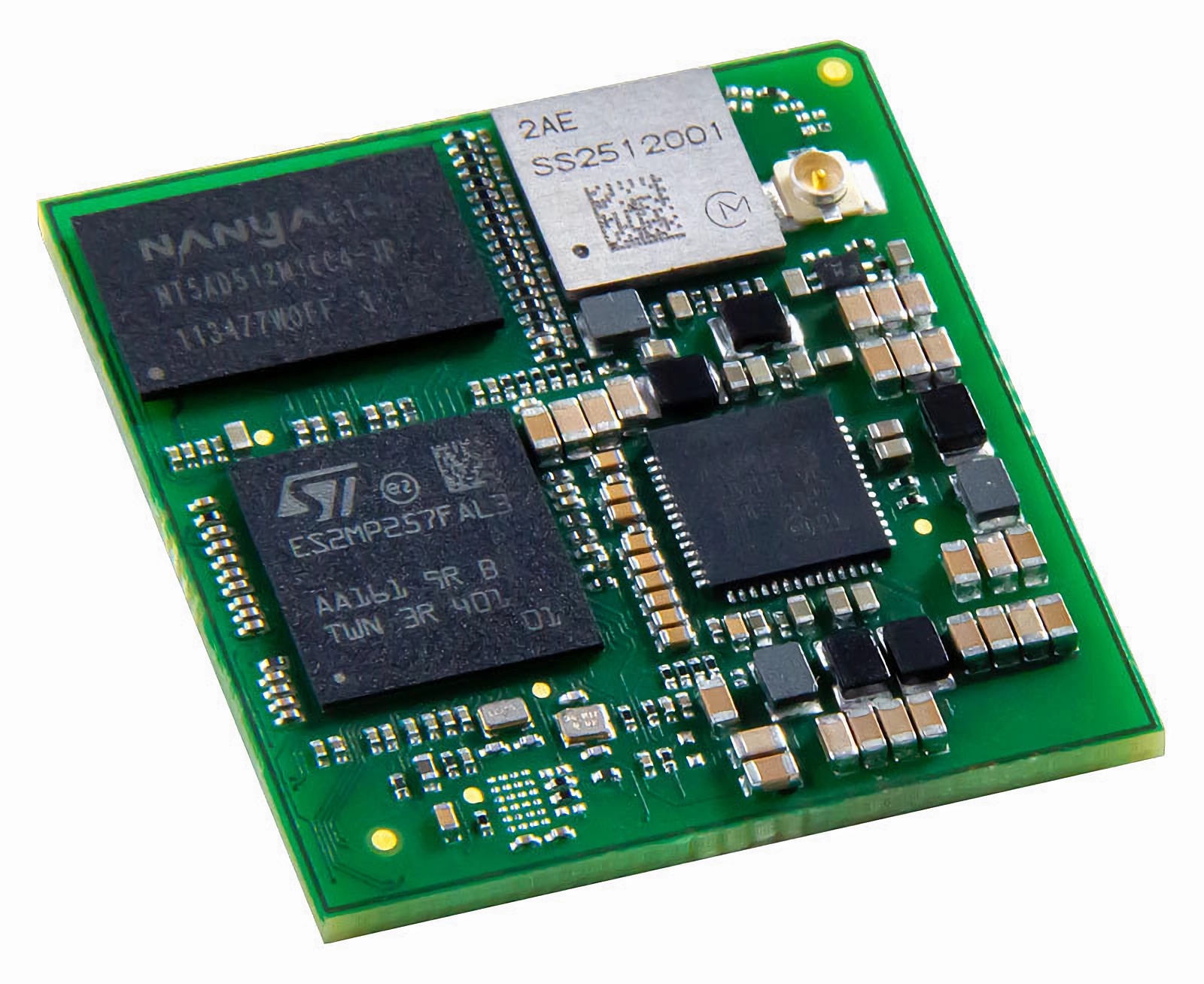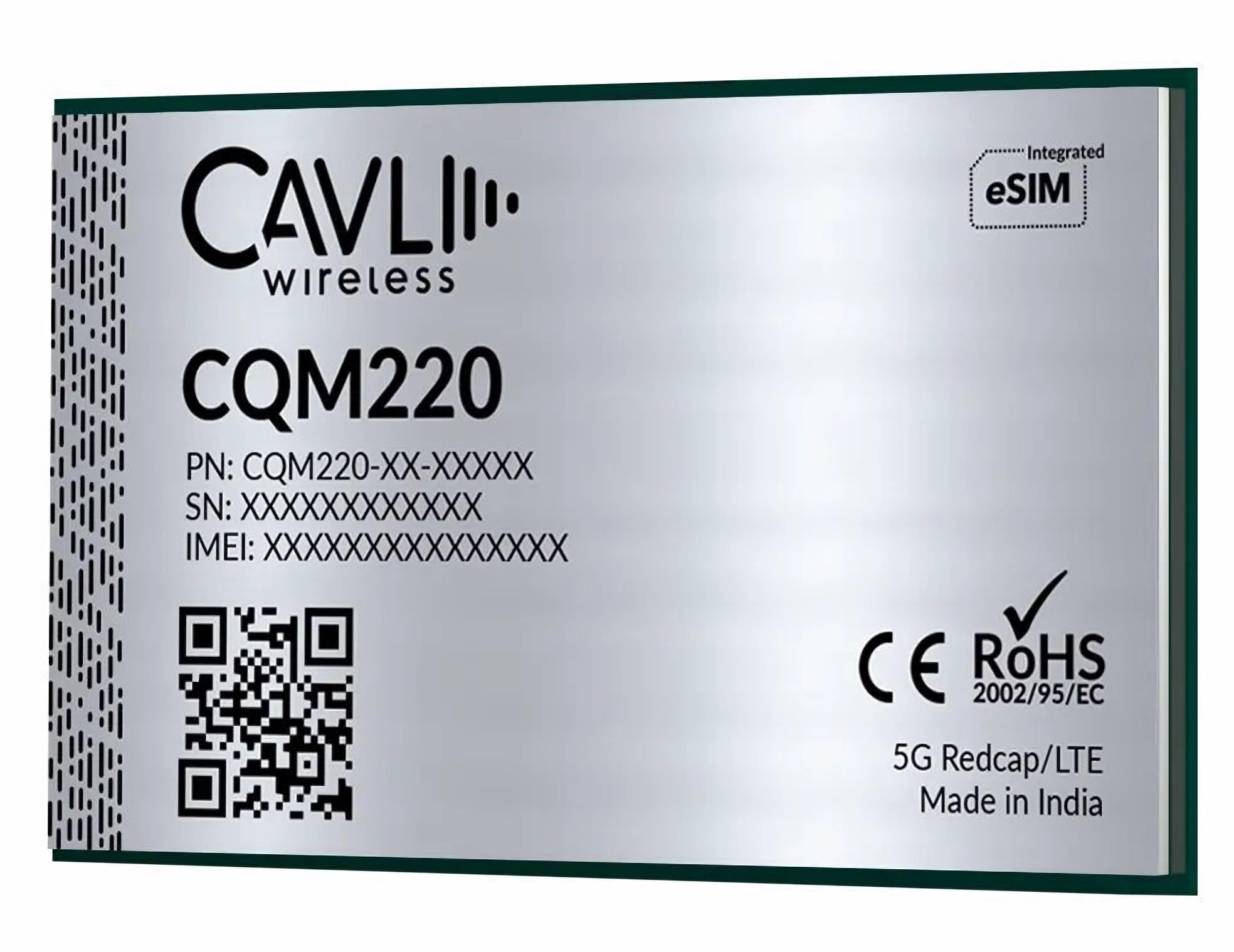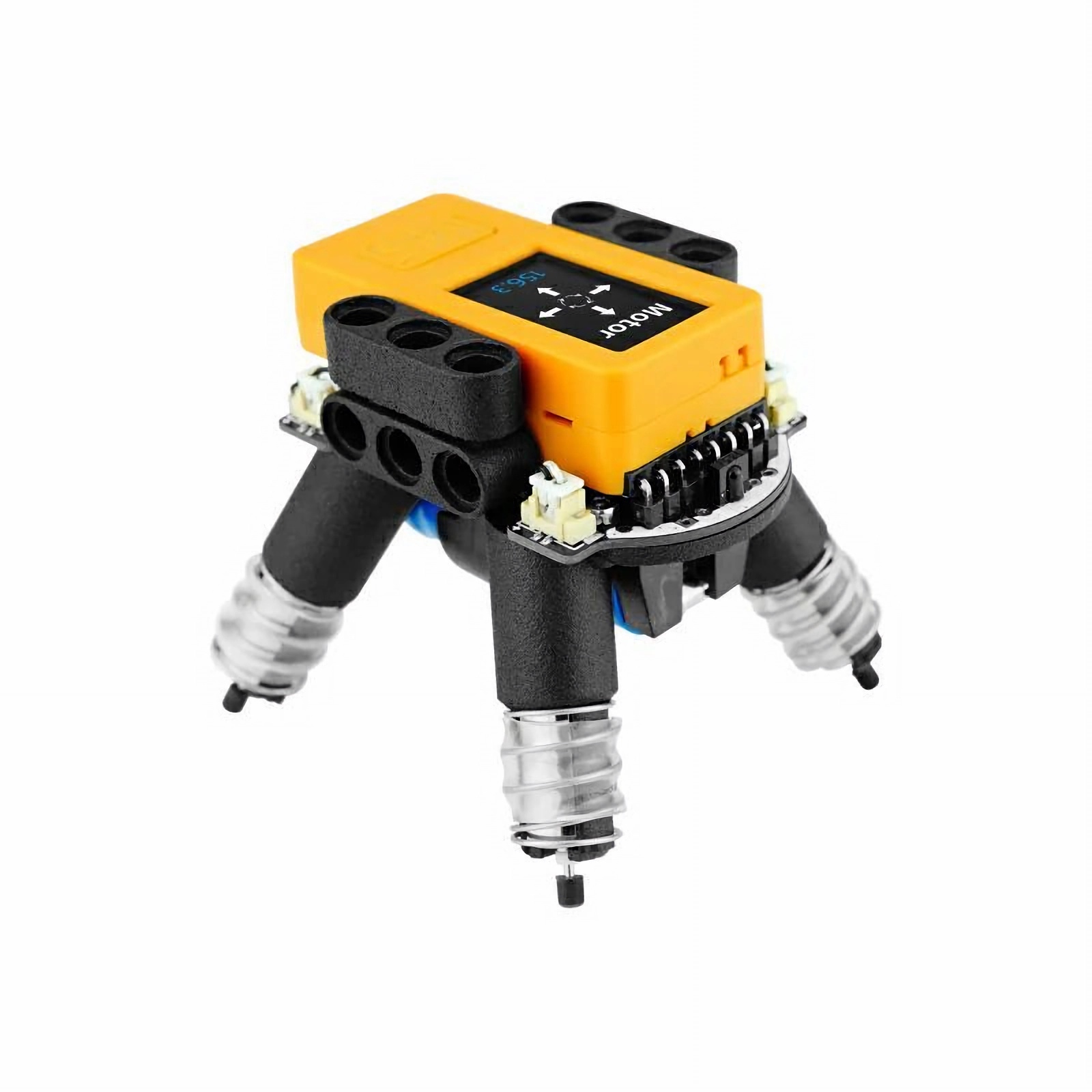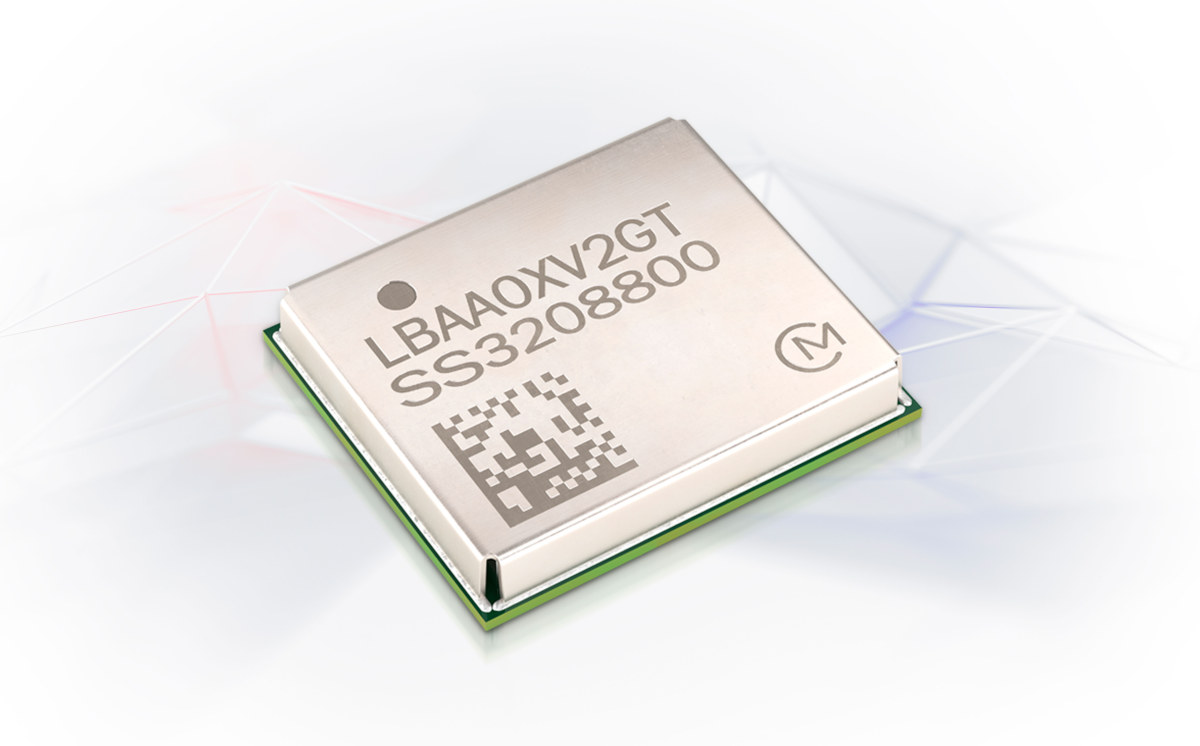Imagination has expanded its Catapult product portfolio to include a new RISC-V core, the Imagination APXM-6200 CPU. The APXM-6200 is a 64-bit, in-order application processor with an 11-stage, dual-issue pipeline. There isn’t much information on the new Imagination RISC-V core on the product page but we know it offers “best-in-class” performance density, a minimal silicon footprint, and industry-standard security features. The CPU is targeted at intelligent consumer and industrial applications and delivers a 2.5x improvement in performance density and a 65% improvement in normalized performance over comparable Arm Cortex-A53 and other cores on the market. It’s also faster than the Cortex-A510 Armv9 core in SpecINT2k6. Imagination claims that combining the APXM-6200 CPU with their GPUs will ensure a 2x increase in bus utilization and a 2x reduction in memory traffic. It also comes with RISC-V vector extensions, and AI compute libraries and supports fast data coupling with AI accelerators for […]
Arm Ethos-U85 NPU delivers up to 4 TOPS for Edge AI applications in Cortex-M7 to Cortex-A520 SoCs
Arm has just Introduced its third-generation NPU for edge AI with the Arm Ethos-U85 that scales from 256 GOPS to 4 TOPS or up to four times the maximum performance of the previous generation Ethos-U65 microNPU, while also delivering 20% higher power efficiency. While previous Arm microNPUs were paired with Cortex-M microcontroller-class cores potentially embedded into a Cortex-A application processor, the new Ethos-U85 can be married with Cortex-M microcontrollers and Cortex-A application processors up to the Cortex-A510/A520 Armv9 cores. Arm expects the Ethos-U85 to find its way into SoC designed for factory automation and commercial or smart home cameras with support for the new Transformer Networks and the more traditional Convolutional Neural Networks (CNNs). The Arm Ethos-U85 supports 128 to 2,048 MACs with performance ranging from 256 GOPS to 4 TOPS at 1 GHz, embeds 29 to 267KB RAM, offers SRAM, DRAM, and flash interface for external memory, and up […]
BCM ECM-ADLN-N97 – A 3.5-inch Intel N97 SBC with DDR5 RAM and dual 2.5Gbps Ethernet
BCM Advanced Research recently introduced the ECM-ADLN-N97, a 3.5-inch SBC built around the Intel Processor N97 Alder Lake-N SoC. This N97 quad-core CPU can be clocked up to 3.6 GHz and features six MB of cache, Intel UHD Graphics, and 24 Execution Units while maintaining a low power consumption with a TDP of just 12 Watts. Additionally, there is the option to utilize Intel Atom or Pentium processors, which have a TDP of 15 Watts. The BCM ECM-ADLN-N97 SBC also has support for DDR5 memory, M.2 E-Key and B-Key slots, 32GB of onboard eMMC, dual 2.5GbE, and multi-display functionality all while maintaining a slim fanless form factor. In one of our previous posts, we wrote about the Cincoze DA-1200 and we also reviewed the Blackview MP80 mini PC both are based on the Intel Processor N97. BCM’s ECM-ADLN-N97 SBC Specification SoC Intel Alder Lake-N Platform; Intel Processor N97, 6M Cache, […]
u-blox ALMA-B1 and NORA-B2, Bluetooth 5.4 LE modules are based on Nordic nRF54H20 and nRF54L15 SoCs
Wireless communication solutions provider, u-blox has added two new modules to its Bluetooth LE portfolio with the ALMA-B1 and NORA-B2 modules built upon the latest low-power wireless nRF54 chips from Nordic Semiconductor. Both modules come in a portable, power-efficient layout and support Bluetooth 5.4 and 802.15.4 (Thread, Matter, Zigbee). The ALMA-B1 and NORA-B2 BLE modules are powered by the low-power nRF54H20 and nRF54L15 SoCs, respectively. This enables them to provide IoT devices with sufficient processing power for edge computing and machine learning without the need for external components. u-blox claims that the ALMA-B1 module provides “more than twice the processing power of previous Bluetooth LE modules” and can replace general-purpose microcontrollers in compact solutions. Also, the NORA-B2 reportedly “consumes up to 50% less current compared to previous generations of Bluetooth LE modules,” leading to longer battery life or smaller batteries in end products. Both modules are classified as open CPU […]
Digi ConnectCore MP25 SoM targets Edge AI and computer vision applications with STM32MP25 MPU
Digi International has announced its latest system-on-module (SoM), the Digi ConnectCore MP25 SoM, based on STM32MP25 MPU at Embedded World 2024 in Nuremberg, Germany. The Digi ConnectCore MP25 SoM is built upon STMicroelectronics’ STM32MP25 microprocessor. It supports artificial intelligence and machine learning functionality through an integrated neural processing unit (NPU) capable of 1.35 tera operations per second (TOPS) and an image signal processor (ISP). It is powered by two 64-bit Arm Cortex-A35 cores running at 1.5GHz, supported by a 32-bit Cortex-M33 core operating at 400MHz and a 32-bit Cortex-M0+core running at 200MHz. With its machine learning capabilities, support for time-sensitive networking, and versatile connectivity features, the ConnectCore MP25 module is suitable for edge AI, computer vision, and smart manufacturing applications in various sectors, including medical, energy, and transportation. Digi ConnectCore MP25 specifications: SoC – STMicroelectronics STM32MP257F CPU – 2x 64-bit Arm Cortex-A35 @ 1.5 GHz; MCU 1x Cortex-M33 @ 400 […]
Cavli’s CQM220 5G RedCap module is available in LGA, M.2, and mPCIe form factors
At Embedded World 2024, leading cellular IoT module manufacturer, Cavli Wireless, is set to shine the spotlight on their latest product offering, the CQM220 cellular IoT module with support for the 5G RedCap (reduced capability) standard introduced in 3GPP Release 17. The module is available in three different form factors: LGA, M.2, and mPCIe Gen 2. It offers a maximum network speed of 226 megabits per second (Mbps) for downlink communication and 121 megabits per second for uplink communication. Similar to the Cavli C16QS module, it can support an integrated eSIM for global coverage via the Calvi Hubble cloud platform and comes with an optional GNSS (Global navigation satellite system) for tracking applications. Cavli CQM220 specifications: Processor – ARM Cortex-A7 @ up to 1.7 GHz Memory / Storage 256 MB RAM 256 MB flash Radio Radio Access Technology: 5G RedCap 3GPP Release: 17 Fallback: 4G LTE Cat 4 Network Speed […]
M5Stack BugC2 programmable robot base has an STM32 control chip and a four-way motor driver
Modular IoT hardware developer, M5Stack, has released a new programmable robot base based on the STM32F030F4 microcontroller with LEGO and Arduino compatibility. The M5Stack BugC2 is “compatible with the M5StickC series controllers,” and includes the ESP32-powered M5StickC Plus2 development kit in the package. It features an L9110S four-way motor driver for all-directional operation, two programmable RGB LEDs, an infrared encoder, and a 16340 rechargeable Li-ion battery holder. It also comes with a USB Type-C port for charging the battery and supports onboard reverse charging protection and voltage detection. Listed applications for the M5Stack BugC2 programmable robot base include remote motor control, robot control, and an intelligent toy. M5Stack BugC2 specifications: Microcontroller – STMicroelectronics STM32F030F4 microcontroller, with Arm 32-bit Cortex-M0 CPU @ 48 MHz, and with up to 256KB of flash memory Motor driver – L9110S Infrared receiver – SL0038GD IR detection distance (StickC Plus2) Infrared emission distance (linear distance) at […]
Murata Type 2GT tiny LoRa module features Semtech LR1121 with Sub-GHz ISM, 2.4GHz, satellite S-Band support
Murata Type 2GT module is a tiny multi-band, low-power radio LoRa module based on the Semtech LR1121, the successor of the LR1120, that supports 860 to 930 MHz and 2.4GHz ISM bands, as well as the 2.1 GHz Satellite S-Band meaning it can work globally. The Type 2GT module measures just 9.98 x 8.70 x 1.74mm and is built on a PCB housed in a metal case and packaged as a land grid array. It combines the Semtech LR1121 RF transceiver IC, a thermally compensated crystal oscillator (TCXO), a second 32KHz crystal, an RF switch, and an RF matching network. Murata Type 2GT module (LBAA0XV2GT-001) specifications: Transceiver – Semtech LR1121 LoRa transceiver LoRa frequencies 860 to 930 MHz (ISM) 2.4 GHz ISM 2.1 GHz satellite S-Band Technology – LoRa, LR-FHSS (Long Range – Frequency Hopping Spread Spectrum) 32 MHz TCXO for maximum frequency accuracy Peripheral I/F – SPI and GPIOs […]


